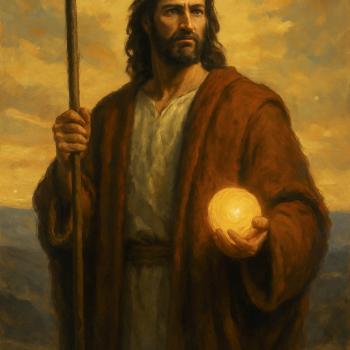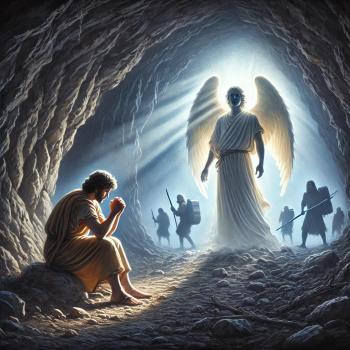2 Peter 1:1-14 Keep On
2 Peter 1:1-4 Keep On is a sermon in the series on 2 Peter. This series continues the sermon series from 1 Peter. The sermons the importance for the Christian to keep on, and to never give up.
Chuck Swindol states the three themes of 2 Peter fit together like the feathers, shaft, and point of an arrow. The feathers are made up of warnings: “Watch out, beware”; reminders: “Remember, don’t forget”; and promises: “It will come to pass, count on this.” These feathers, however, amount to nothing more than spiritual-sounding fluff if we don’t act on them. So label the main shaft diligence. Peter will tell us more than once that if diligence is applied it will lead to the arrow’s point — hope!
The purpose of the letter is to warn against false teaching, moral compromise, and doctrinal error in the last days. To put it another way, when we look at this letter, we need to keep on following Jesus (1:1-21), keep on resisting false teachers (2:1-22), and keep on trusting God (3:1-18).
“Simeon Peter, a slave and an apostle of Jesus Christ: To those who have obtained a faith of equal privilege with ours through the righteousness of our God and Savior Jesus Christ.” (2 Peter 1:1, HCSB)
The book identifies Simon Peter right up front. He identifies himself as a slave and an apostle. It is significant that Peter calls himself by both his Jewish and Greek name. Peter discovered who he was in Christ long ago. In Matthew 16:18, Jesus asked the disciples who the people said He was. Peter made a confession. After this confession, Jesus made a prophecy about Peter. Jesus changed his identity by giving him a mission. Peter discovered his identity. Peter was changed from shifting sand to rock when he understood who Jesus was.1 He would not just be a Jew, but a missionary. This is one of the definitions of apostle – an eyewitness who is sent.
Peter served as leader of the twelve apostles and head of the Jerusalem church; but he did not place himself above others. He never claimed primacy, or that he was the pope, ‘the Vicar of Christ on earth’. Instead he opens this letter with: ‘Simon Peter, a servant’. The New Testament Greek word translated ‘servant’ is doulos. Its basic meaning was ‘slave’, someone who was subject to a master. Peter willingly bowed to his Lord as a slave, as one lovingly committed to worship and work for the Saviour who had done so much for him.2
Many scholars note that the apostle Peter wrote both epistles. Most believe 2 Peter was written just before the apostle’s death, in A.D. 67 or 68.3
Although it was accepted into the canon of Scripture last, it has many reasons to be considered written by Peter. For example, the letter references events in Peter’s life with Jesus. Peter refers to events from his first letter as coming true. 1 Peter deals with dangers from outside the church. 2 Peter deals with dangers from inside the church.
There are scholars who believe that Peter wrote this letter. They look to internal evidence. This evidence includes his introductory statement (1:1), his reference to this as his second epistle (3:1) and to his being an apostle (1:1, 3:2), his apparent reference to being an eyewitness at the Transfiguration of Christ (1:16–18), and his statement concerning his impending death as the fulfillment of the prophetic statement made by Jesus in John 21:18 (1:13, 14)4.
At least one theologian does not believe that Peter wrote this letter. John Piper believes that Jude may have written 2 Peter and that Peter approved it. Since the book of Jude is much closer to 2 Peter in style, vocabulary, and content than is 1 Peter5. Just as Silvanius helped pen the first epistle, Jude probably helped write 2 Peter.
At the same time, Arnold Fruchtenbaum very clearly shows us that this is not the case. When he compares the two letters, he notes that 2 Peter is in the future, and Jude notes the events are in the past. So Jude is quoting Peter. Anyone who has read 2 Peter and immediately reads Jude quickly notes a great number of similarities. In fact, there are a total of thirteen similarities between 2 Peter and Jude:
2 Peter 1:5 Jude 3
2 Peter 2:1 Jude 4
2 Peter 2:4 Jude 6
2 Peter 2:6–7 Jude 7
2 Peter 2:10 Jude 8
2 Peter 2:11 Jude 9
2 Peter 2:12 Jude 10
2 Peter 2:13 Jude 12
2 Peter 2:15 Jude 11
2 Peter 2:15–17 Jude 12–13
2 Peter 2:18 Jude 16
2 Peter 3:2 Jude 17
2 Peter 3:3 Jude 18
It is obvious that one writer is quoting from the other. As to the question of which writer is quoting the other, it is obvious that Jude is quoting Peter.6 Personally, I believe that both statements are true. Just as the Synoptic Gospels use a similar source, Jude and 2 Peter could also be using a similar source.
“May grace and peace be multiplied to you through the knowledge of God and of Jesus our Lord.” (2 Peter 1:2, HCSB)
The grace of God leads to the peace of God. A Christian cannot have peace without grace. However, neither of these qualities are automatically manifested in the Christian. Grace leads to peace through growth. Knowledge of God and Jesus as Lord leads to peace. Many people come to know Jesus Christ as Savior (that is the grace part). Few Christians come to know Jesus Christ as Lord (that is the peace part.) When I grow spiritually, I learn to submit myself and my life to Jesus Christ a little more each day.
“His divine power has given us everything required for life and godliness through the knowledge of Him who called us by His own glory and goodness.” (2 Peter 1:3, HCSB)
In New Testament Greek, the word we have translated here as ‘power’ is dunamis, from which the word dynamite is derived. The Word of God is not destructive even though it is explosive. The power to live as Christian believers is through a knowledge of God that is personal and intimate.7
This same power which is strong enough to save you when you accepted Jesus as Savior will also be strong enough to keep you saved as you grow (“the knowledge of Him”) to let Jesus Christ be the Lord of your life. This power gives us everything we need to live life and be godly.
Warren Wiersbe notes that just as a baby has a definite genetic structure that determines how he will grow, so the believer is “genetically structured” to experience “glory and virtue.” One day he will be like the Lord Jesus Christ (Romans 8:29; 1 John 3:2). We have been “called … to His eternal glory” (1 Peter 5:10), and we shall share that glory when Jesus Christ returns and takes His people to heaven. But we are also “called … to virtue.” We have been saved so that we might “show forth the praises [virtues] of Him who hath called [us] out of darkness into His marvelous light” (1 Peter 2:9). We should not wait until we get to heaven to become like Jesus Christ! In our character and conduct, we should reveal His beauty and grace today8.
“By these He has given us very great and precious promises, so that through them you may share in the divine nature, escaping the corruption that is in the world because of evil desires.” (2 Peter 1:4, HCSB)
John Bunyan, in The Pilgrim’s Progress, pictures the two pilgrims, Christian and Hopeful, languishing in the dungeon of Doubting Castle, which is owned by Giant Despair. Bunyan wrote:
Christian said to Hopeful, ‘What a fool I am, to lie here in this stinking Dungeon when I might walk free on the highway to glory!’
Then Christian took the key of Promise and pushed it into the lock of the dungeon door. The bolt fell back and the door came open. They walked out into the castle. Then they went to the door leading to the castle yard. The key opened that door also. Now they came to the great iron gate leading outside. The lock to the gate was exceedingly difficult, yet they unlocked it and pushed open the gate to make their escape. But the gate made such a creaking sound that it woke the giant, who jumped out of bed to pursue his prisoners. Then he was seized by one of his fits and lost the use of his limbs. The prisoners ran to the King’s highway, where they were safely beyond Giant Despair’s jurisdiction9.
The same divine power which saved us also gives us promises to share in the divine nature (or body of Christ as Paul would put it). It’s like the hymn we sing “Standing on the Promises.” We will end by singing this hymn as a reminder to “keep on.”
1 Jon Courson, Jon Courson’s Application Commentary (Nashville, TN: Thomas Nelson, 2003), 1584.
2 Clive Anderson, Opening up 2 Peter, Opening Up Commentary (Leominster: Day One Publications, 2007), 14–15.
3 Larry Richards and Lawrence O. Richards, The Teacher’s Commentary (Wheaton, IL: Victor Books, 1987), 1037.
4 Paul A. Cedar and Lloyd J. Ogilvie, James / 1 & 2 Peter / Jude, vol. 34, The Preacher’s Commentary Series (Nashville, TN: Thomas Nelson Inc, 1984), 200.
5 John Piper, “Liberating Promises, 2 Peter 1:1-4, April 25, 1982,” Sermons from John Piper (1980–1989) (Minneapolis, MN: Desiring God, 2007).
6 Arnold G. Fruchtenbaum, The Messianic Jewish Epistles: Hebrews, James, First Peter, Second Peter, Jude, 1st ed. (Tustin, CA: Ariel Ministries, 2005), 390–391.
7 Clive Anderson, Opening up 2 Peter, Opening Up Commentary (Leominster: Day One Publications, 2007), 20.
8 Warren W. Wiersbe, The Bible Exposition Commentary, vol. 2 (Wheaton, IL: Victor Books, 1996), 437.
9 Clive Anderson, Opening up 2 Peter, Opening Up Commentary (Leominster: Day One Publications, 2007), 22–24.













